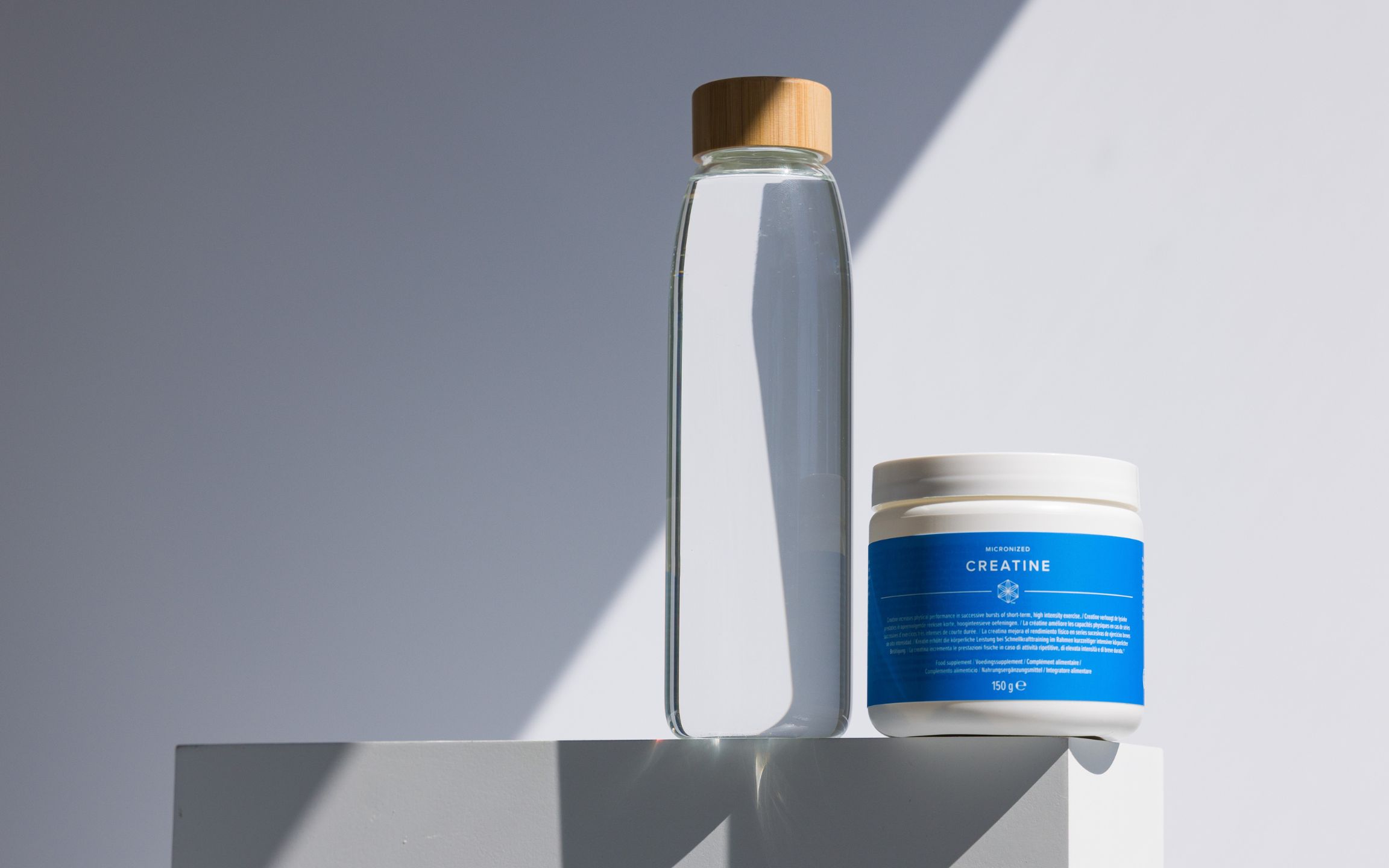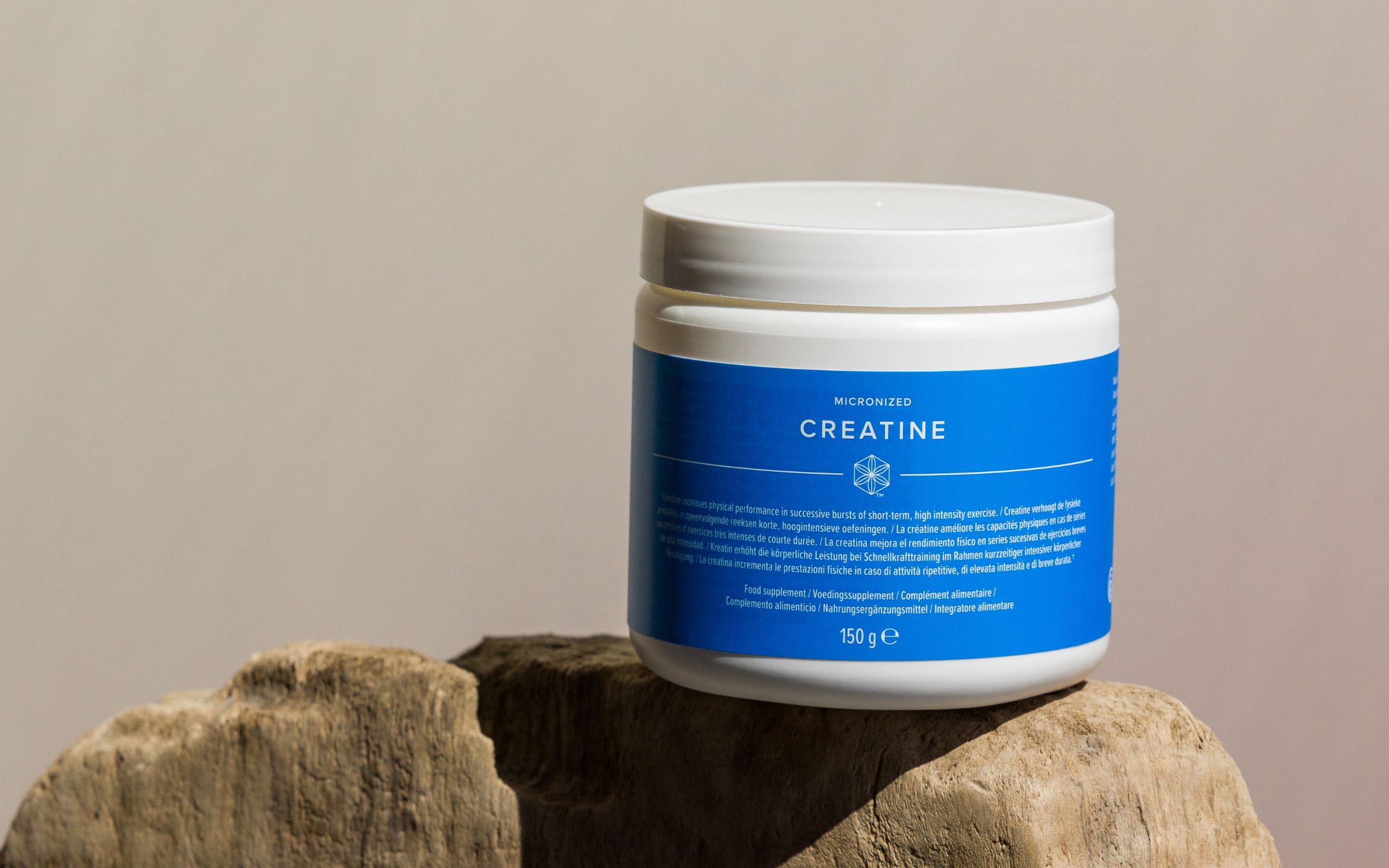Ingredient Spotlight: Moringa
May 18, 2023,
Megan Close

Often referred to as the “miracle tree,” moringa is gaining in global popularity for its beneficial roles not only in nutrition but also in sustainability, global health, and agriculture. So what makes moringa so magnificent?
History and Global Use of Moringa
The moringa (Moringa oleifera) tree is a fast-growing, deciduous tree native to subtropical areas in southern Asia, Africa, and South America. Because of its ability to grow year-round, many cultures have used various parts of the moringa tree both medicinally and as a food source. First described around 2000 B.C., moringa was used as a remedy for over 300 conditions in traditional medicine (1). Today, it continues to thrive globally because of its ability to sustainably improve diets by adding protein, micronutrients, and other phytochemicals.
Nutrients Found in Moringa
Across the globe, people in developing countries supplement their diets with moringa because of its extraordinary nutrient density. Moringa leaves are rich in protein, essential amino acids, and micronutrients such as copper, manganese, iron, zinc, and vitamin A, making it a great source for natural nutrient fortification (2, 3). Moringa is not only abundant in micronutrients, but it also has polyphenols, isothiocyanates, and polyunsaturated fatty acids (PUFAs). Its oil is nutritionally similar to olive oil but is more resistant to oxidation and does not become rancid as quickly.
Unlike many botanicals, studies have shown that moringa is hearty and that its nutrients can withstand extreme temperatures such as boiling. By adding the leaves to a broth or even battering and frying them, unserved populations are able to nourish their bodies with an easy-to-grow superfood that can be harvested locally and remain nutritionally stable for long periods of time (4).
Moringa Is More Than a Superfood
The mild flavor of the flower and nutrient-dense leaf are consumed in foods and brewed as a tea, but beyond its nutritional benefits, moringa’s versatility makes it a sustainable solution with many applications. The seed oil is often used in skin and hair care, while the seed itself has more recently been used in water purification. Moringa bark and seed cake are used in textiles and animal feed, the roots are used therapeutically, and the live tree is often used as fencing (5, 6). With little water needed to grow it and the ability to utilize every part of the tree, moringa is a sustainable option across multiple industries with virtually endless uses.
References
1. Matic I, Guidi A, Kenzo M, et al. Investigation of medicinal plants traditionally used as dietary supplements: A review on Moringa oleifera. J Public Health Afr. 2018 Dec 21; 9(3): 841.
2. Olson ME, Sankaran RP, Fahey JW, et al. Leaf Protein and Mineral Concentrations across the “Miracle Tree” Genus Moringa. PLoS ONE 11(7): e0159782. https://doi.org/10.1371/journal.pone.0159782
3. Glover-Amengor M, Aryeetev R, Afari E, et al. Micronutrient composition and acceptability of Moringa oleifera leaf-fortified dishes by children in Ada-East district, Ghana. Food Sci Nutr. 2017 Mar; 5(2): 317–323.
4. Gopalakrishnan L, Doriya K, Kumar DS. Moringa oleifera: A review on nutritive importance and its medicinal application. Food Science and Human Wellness. 2016 June; 5(2): 49-56.
5. Mulugeta G and Fekadu A. Industrial and Agricultural Potentials of Moringa. Journal of Natural Sciences Research 4 14.
6. Masih LP, Singh S, Elamathi S, et al. Moringa: A multipurpose crop – A review. Proc Indian Natn Sci Acad 85 No. 3 September 2019 pp. 589-601
7. Islam Z, Islam R, Hossen F et al. “Moringa oleifera is a Prominent Source of Nutrients with Potential Health Benefits”, International Journal of Food Science, vol. 2021
Ingrediënten Spotlight: Moringa
Vaak aangeduid als de “wonderboom”, wint moringa wereldwijd aan populariteit vanwege zijn heilzame rol, niet alleen in de voeding maar ook in duurzaamheid, wereldgezondheid en landbouw. Wat maakt moringa zo geweldig?
Geschiedenis en wereldwijd gebruik van moringa
De moringaboom (Moringa oleifera) is een snelgroeiende, bladverliezende boom die inheems is in subtropische gebieden in Zuid-Azië, Afrika en Zuid-Amerika. Omdat hij het hele jaar door kan groeien, hebben veel culturen verschillende delen van de moringa boom zowel medicinaal als als voedselbron gebruikt. Voor het eerst beschreven rond 2000 voor Christus, werd moringa gebruikt als een remedie voor meer dan 300 aandoeningen in de traditionele geneeskunde (1). Vandaag de dag floreert het wereldwijd vanwege zijn vermogen om het dieet duurzaam te verbeteren door toevoeging van eiwitten, micronutriënten en andere fytochemicaliën.
Voedingsstoffen in Moringa
Over de hele wereld vullen mensen in ontwikkelingslanden hun dieet aan met moringa vanwege de buitengewone nutriëntdichtheid. Moringabladeren zijn rijk aan eiwitten, essentiële aminozuren en micronutriënten zoals koper, mangaan, ijzer, zink en vitamine A, waardoor het een uitstekende bron is voor natuurlijke verrijking met voedingsstoffen (2, 3). Moringa is niet alleen rijk aan micronutriënten, maar bevat ook polyfenolen, isothiocyanaten en meervoudig onverzadigde vetzuren (PUFA’s). De olie is qua voedingswaarde vergelijkbaar met olijfolie, maar is beter bestand tegen oxidatie en wordt niet zo snel ranzig.
In tegenstelling tot veel plantaardige producten, hebben studies aangetoond dat moringa stevig is en dat de voedingsstoffen bestand zijn tegen extreme temperaturen zoals koken. Door de bladeren toe te voegen aan een bouillon of ze zelfs in beslag te nemen en te bakken, kunnen bevolkingsgroepen die geen voedsel hebben, hun lichaam voeden met een gemakkelijk te kweken superfood dat lokaal kan worden geoogst en gedurende lange tijd voedingsstabiel blijft (4).
Moringa is meer dan een superfood
De milde smaak van de bloem en het voedingsrijke blad worden geconsumeerd in voedsel en gebrouwen als thee, maar naast de voedingsvoordelen maakt de veelzijdigheid van moringa het tot een duurzame oplossing met vele toepassingen. De zaadolie wordt vaak gebruikt in huid- en haarverzorging, terwijl het zaad zelf recentelijk is gebruikt voor waterzuivering. Moringaschors en –zaadkoek worden gebruikt in textiel en diervoeder, de wortels worden therapeutisch gebruikt en de levende boom wordt vaak gebruikt als afrastering (5, 6). Omdat er weinig water nodig is voor de teelt en elk deel van de boom kan worden gebruikt, is moringa een duurzame optie voor meerdere industrieën met vrijwel eindeloze toepassingen.
References
1. Matic I, Guidi A, Kenzo M, et al. Investigation of medicinal plants traditionally used as dietary supplements: A review on Moringa oleifera. J Public Health Afr. 2018 Dec 21; 9(3): 841.
2. Olson ME, Sankaran RP, Fahey JW, et al. Leaf Protein and Mineral Concentrations across the “Miracle Tree” Genus Moringa. PLoS ONE 11(7): e0159782. https://doi.org/10.1371/journal.pone.0159782
3. Glover-Amengor M, Aryeetev R, Afari E, et al. Micronutrient composition and acceptability of Moringa oleifera leaf-fortified dishes by children in Ada-East district, Ghana. Food Sci Nutr. 2017 Mar; 5(2): 317–323.
4. Gopalakrishnan L, Doriya K, Kumar DS. Moringa oleifera: A review on nutritive importance and its medicinal application. Food Science and Human Wellness. 2016 June; 5(2): 49-56.
5. Mulugeta G and Fekadu A. Industrial and Agricultural Potentials of Moringa. Journal of Natural Sciences Research 4 14.
6. Masih LP, Singh S, Elamathi S, et al. Moringa: A multipurpose crop – A review. Proc Indian Natn Sci Acad 85 No. 3 September 2019 pp. 589-601
7. Islam Z, Islam R, Hossen F et al. “Moringa oleifera is a Prominent Source of Nutrients with Potential Health Benefits”, International Journal of Food Science, vol. 2021
Inhaltsstoffe im Blickpunkt: Moringa
Moringa wird oft als “Wunderbaum” bezeichnet und erfreut sich weltweit wachsender Beliebtheit, da es nicht nur in der Ernährung, sondern auch in den Bereichen Nachhaltigkeit, globale Gesundheit und Landwirtschaft eine wichtige Rolle spielt. Was also macht Moringa so großartig?
Geschichte und globale Verwendung von Moringa
Der Moringa-Baum (Moringa oleifera) ist ein schnell wachsender, sommergrüner Baum, der in subtropischen Gebieten im südlichen Asien, Afrika und Südamerika beheimatet ist. Aufgrund seiner Fähigkeit, das ganze Jahr über zu wachsen, haben viele Kulturen verschiedene Teile des Moringa-Baums sowohl als Heilmittel als auch als Nahrungsquelle verwendet. Erstmals um 2000 v. Chr. beschrieben, wurde Moringa in der traditionellen Medizin als Heilmittel für über 300 Krankheiten eingesetzt (1). Heute gedeiht der Moringabaum weltweit aufgrund seiner Fähigkeit, die Ernährung durch den Zusatz von Proteinen, Mikronährstoffen und anderen sekundären Pflanzenstoffen nachhaltig zu verbessern.
In Moringa enthaltene Nährstoffe
Überall auf der Welt ergänzen Menschen in Entwicklungsländern ihre Ernährung mit Moringa, weil es eine außerordentliche Nährstoffdichte aufweist. Moringa-Blätter sind reich an Proteinen, essenziellen Aminosäuren und Mikronährstoffen wie Kupfer, Mangan, Eisen, Zink und Vitamin A, was sie zu einer hervorragenden Quelle für die natürliche Nährstoffanreicherung macht (2, 3). Moringa ist nicht nur reich an Mikronährstoffen, sondern enthält auch Polyphenole, Isothiocyanate und mehrfach ungesättigte Fettsäuren (PUFAs). Ihr Öl hat einen ähnlichen Nährwert wie Olivenöl, ist aber resistenter gegen Oxidation und wird nicht so schnell ranzig.
Im Gegensatz zu vielen anderen Pflanzen haben Studien gezeigt, dass Moringa sehr robust ist und seine Nährstoffe auch extremen Temperaturen wie dem Kochen standhalten. Indem man die Blätter in eine Brühe gibt oder sie sogar paniert und frittiert, können unversorgte Bevölkerungsgruppen ihren Körper mit einem leicht anbaubaren Superfood ernähren, das vor Ort geerntet werden kann und über lange Zeit nährstoffstabil bleibt (4).
Moringa ist mehr als ein Superfood
Der milde Geschmack der Blüte und das nährstoffreiche Blatt werden in Lebensmitteln verzehrt und als Tee aufgebrüht, aber neben den ernährungsphysiologischen Vorteilen macht die Vielseitigkeit von Moringa die Pflanze zu einer nachhaltigen Lösung mit vielen Anwendungsmöglichkeiten. Das Samenöl wird häufig zur Haut- und Haarpflege verwendet, während die Samen selbst in jüngerer Zeit zur Wasseraufbereitung eingesetzt werden. Die Rinde und der Samenkuchen von Moringa werden in Textilien und Tierfutter verwendet, die Wurzeln werden therapeutisch eingesetzt, und der lebende Baum wird häufig als Zaun verwendet (5, 6). Da für den Anbau nur wenig Wasser benötigt wird und alle Teile des Baumes genutzt werden können, ist Moringa eine nachhaltige Option für zahlreiche Branchen mit praktisch unbegrenzten Einsatzmöglichkeiten.
References
1. Matic I, Guidi A, Kenzo M, et al. Investigation of medicinal plants traditionally used as dietary supplements: A review on Moringa oleifera. J Public Health Afr. 2018 Dec 21; 9(3): 841.
2. Olson ME, Sankaran RP, Fahey JW, et al. Leaf Protein and Mineral Concentrations across the “Miracle Tree” Genus Moringa. PLoS ONE 11(7): e0159782. https://doi.org/10.1371/journal.pone.0159782
3. Glover-Amengor M, Aryeetev R, Afari E, et al. Micronutrient composition and acceptability of Moringa oleifera leaf-fortified dishes by children in Ada-East district, Ghana. Food Sci Nutr. 2017 Mar; 5(2): 317–323.
4. Gopalakrishnan L, Doriya K, Kumar DS. Moringa oleifera: A review on nutritive importance and its medicinal application. Food Science and Human Wellness. 2016 June; 5(2): 49-56.
5. Mulugeta G and Fekadu A. Industrial and Agricultural Potentials of Moringa. Journal of Natural Sciences Research 4 14.
6. Masih LP, Singh S, Elamathi S, et al. Moringa: A multipurpose crop – A review. Proc Indian Natn Sci Acad 85 No. 3 September 2019 pp. 589-601
7. Islam Z, Islam R, Hossen F et al. “Moringa oleifera is a Prominent Source of Nutrients with Potential Health Benefits”, International Journal of Food Science, vol. 2021




